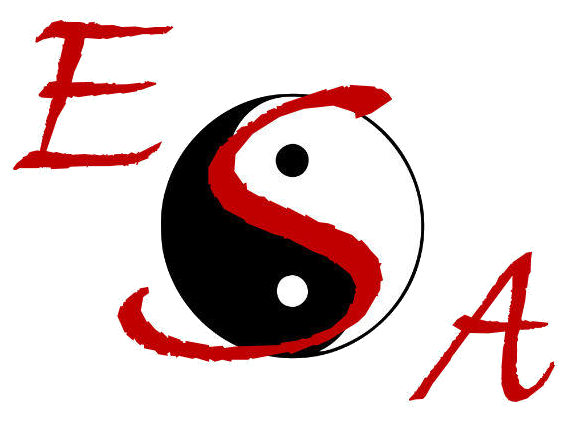
- East Side Acupuncture6515 Basile Rowe
East Syracuse NY 13057
181 Kenwood Ave.
Oneida, NY 13421(315) 569-6579 East Syracuse Hours
Mon9am-6pmThurs9am-6pm
Oneida Hours
Tues9:30am-1pmWed9:30am-5:30pm
-
- Sign up to receive news and updates and get my free report:“The Top 10 Reasons to Try Acupuncture”

-
- TestimonialsWhy acupuncture? Why not?! Couldn’t hurt. My husband and I had been trying to get pregnant for 4 years. We were charting my BBT and watching for “signs” of fertility. We tried a ton of stuff. One day my mother had asked if I had ever considered acupuncture for fertility. She said that she had a co-worker whose daughter tried it for her fertility and after one session she ended up pregnant! I thought about it and figured that we... Read more »
When I decided that I wanted to stop drinking; I knew I needed help. I saw a commercial on tv for a addiction recovery place and in it someone was receiving acupuncture. I thought it was a place to start. I found casey on line and made a appt. He asked questions and took some history with out being judgemental then proceded with a treatment. For the first few weeks I was anxious but Casey gave me herb supplements and had me take note of
... Read more »I lead a very active lifestyle and for 4 years I had been experiencing pain in my arms as well as fatigue and shortness of breath whenever I worked out. I had been to several doctors who prescribed the general remedies; iron supplements, ibuprofen and rest. Finally I just gave up and conceded to the idea that the pain would never go away. After constant nudging from my training coach I agreed to go see Casey not really knowing what to expect but... Read more »I sought Casey’s help last year when I started nursing school and became physically ill from all the stress. I had a lot of trouble with my shoulder/back/neck, could not breathe well, and kept having weird pains all over I could not really explain. Casey was able not only to begin unlocking all the chaos in my body, but also to instruct me on the beginnings of better living that have all started coming together. The effects are not always
... Read more »After living a year in terrible pain even after a cortisone shot and physical therapy, I was regretfully facing shoulder surgery for an impingement. At this point, I decided to try one last thing…acupuncture. I found Casey through a referral and he was able to completely relieve my shoulder pain through acupuncture…something that I only thought that surgery and a long road of physical therapy would do. I would recommend Casey to anyone considering acupuncture…he explained exactly what he was
... Read more »I have been treated by Casey for an arthritic neck and lower back and have felt an over-all effective reaction to the acupuncture treatment. I recommend him to my friends and they also have had good results.
I was referred to Casey Lewis for sciatic pain in my leg, which being a hair dresser was becoming extremely difficult to bear. I was also experiencing hot flashes, day and NIGHT. After one treatment, my pain level immediately went from a 8 to a 1, and I have not had a hot flash since!! I have seen Casey only 6 times in 5 months, and my life now is practically pain free. I would recommend acupunture to anyone looking
... Read more »I saw Casey for 16 sessions recently. When I went to see him on a referral from a friend I was most concerned with back pain, but I was also working on some weight loss and thought this would help, as well as some stress relief. I was amazed that after the first visit I had absolutely no back pain and that would last about the full two weeks until I saw him again. He has also helped me with
... Read more »I have had 8 sessions with Casey, for a few issues I was having. Horrible leg cramps were keeping me up. After the first session (and it doesn’t hurt) I had a great nights sleep. My hands and fingers do not go numb, and my overall physical and mental feelings have become much better! I definitely recommend this New/Old treatment to anyone with problems, and definitely before you decide to have surgery. It just might avoid it! (like it did
... Read more » -
Latest Articles:
- • 10 Family-Friendly Activities Perfect for Spring •
- • 3 Easy Spring Dinner Ideas for a Fresh and Flavorful Season •
- • 5 Tips to Boost Your Spring Wellness Routine •
Wellness
The Surprising Truth about Migraine Triggers
 How much do you really know about controlling your migraines?
How much do you really know about controlling your migraines?
New research suggests you may not know as much as you think.
According to Timothy T. Houle, Ph.D and co-author Dana P. Turner, M.S.P.H., both of the Wake Forest Baptist anesthesiology department, migraine sufferers make inaccurate conclusions about what triggers their migraines. Houle and Turner conducted a 3-month study of 9 women who suffered from migraines. They tracked the women’s hormone levels, their stress levels and the weather. The women kept daily diaries. At the end of the study, the scientists could not accurately predict which triggers would cause a migraine.
Their conclusion—most people can’t isolate the many complex variables in everyday life to accurately determine their migraine triggers.
So what can you do? Can you start eating anything you want? Do you give up managing your migraines?
9 Ways to Rid Your Home of Endocrine Disruptors
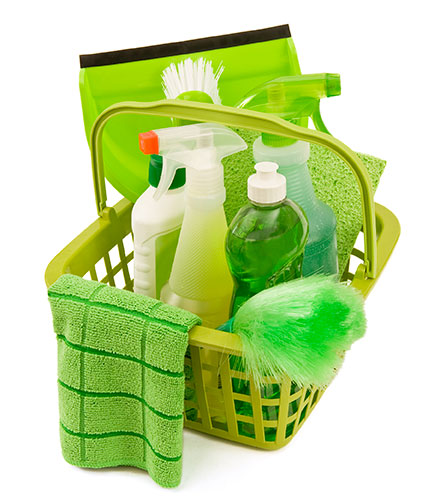 Can a shower curtain be bad for your health?
Can a shower curtain be bad for your health?
It can if it contains phthalates.
Phthalates are just some of over 800 chemicals that are labeled as endocrine disruptors. These chemicals are toxic for a number of reasons. They may mimic estrogen, androgen or thyroid hormones and cause your body to respond to them inappropriately. Or they may block, stimulate or inhibit these hormones. By interfering in your hormone system, there is growing evidence that these chemicals are responsible for a wide range of health problems.
Endocrine disruptors are found in many products. Sandwich bags, air fresheners, dryer sheets, perfumes, sunscreens, cleaning products, laundry detergents, flame retardants, pesticides, cosmetics, shampoo, conditioners and vinyl shower curtains can all be suspect.
One widely known endocrine disruptor is bisphenol-A or BPA. This chemical is found in plastics and is the reason many people choose glass water bottles over plastic.
In February 2013, the United Nations Environmental Program (UNEP) and the World Health Organization (WHO) released a new report: State of the Science of Endocrine Disrupting Chemicals 2012. According to this study, endocrine disruptors are linked to high rates of endocrine-related cancers, such as breast, ovarian, prostate, testicular and thyroid cancers; low semen quality; genital malfunctions such as non-descended testes; adverse pregnancy outcomes; obesity; and Type 2 diabetes.
But the effects don’t stop with humans. The report also finds reproductive defects, infertility and antler malformations in some Alaskan deer populations and population decline in some species of otters and sea lions.
Clearly, it’s a good idea to minimize your exposure to these chemicals.
More than Needles: 6 TCM Therapies You May Never Have Heard of
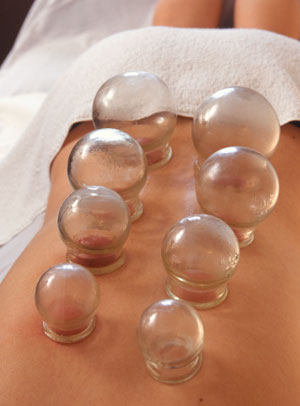 Most people know that one way to feel better is with acupuncture needles. You go to your acupuncturist feeling bad. I put in a few needles. You leave feeling lighter, energized, more pain-free.
Most people know that one way to feel better is with acupuncture needles. You go to your acupuncturist feeling bad. I put in a few needles. You leave feeling lighter, energized, more pain-free.
Using acupuncture needles to heal is part of a broader medical system called Traditional Chinese Medicine (TCM). By observing body systems and the links between symptoms, TCM developed a medical philosophy about the flow of Qi, or life force. When Qi is balanced, you feel healthy. When it is disrupted, blocked or unbalanced, poor health is the result.
In acupuncture, needles are placed at specific points along the meridians to balance the Qi.
But did you know that needles are just one way to balance Qi?
TCM is a flexible system. The principles can be applied in many ways and to many different therapies to achieve the same results.
In the following 2 part series, we will look at the many ways you can balance Qi. This first part of the series describes the TCM therapies that require the help of a practitioner.
6 Ways to Relieve Allergies Without Drugs, Shots or Needles
 Summer finally arrives.
Summer finally arrives.
The sun comes out. The flowers bloom.
Most people grab their sunscreen and head outside. But what do you do?
You close the windows, grab your antihistamines and hide in the house.
Wouldn’t it be great if you could enjoy being outdoors?
Allergies are widespread. According to WebMD, 20% of the population suffers from allergies or asthma, and 55% of the population tests positive for one or more allergens. Allergies are the 5th leading chronic disease in the US and cost the US health care system $7.9 billion annually.
If you can’t live with your runny nose, congestion or watery eyes, but you don’t want to take antihistamines or get allergy shots, what can you do to relieve your symptoms?
7 Healthy Tips for Coping with Financial Stress
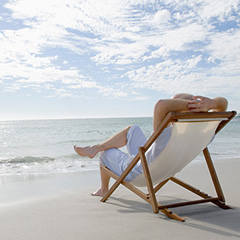 If you feel stressed just living your life, you’re not alone.
If you feel stressed just living your life, you’re not alone.
Americans lead stressful lives. Jobs, relationships, health, family obligations, community responsibilities—they all take their toll.
In “Stress in America 2012,” an annual survey by the American Psychology Association, 1 in 5 respondents reported an extreme stress level of 8, 9 or 10 on a 10-point scale. In that same group 69% of respondents reported physical or non-physical symptoms of stress, including irritability or anger, fatigue, feeling overwhelmed or changes in their sleep.
The top source of stress according to 69% of the respondents is–money. continue reading
How Traditional Chinese Diabetic Treatments Bring New Hope for an Old Disease
Diabetes is a worldwide concern. Millions of people suffer or die from it and its complications. The rate at which it is increasing in the population is staggering.
According to the World Health Organization about 347 million people worldwide have diabetes. Deaths from diabetes will rise 50% in the next 10 years and by 2030 diabetes is expected to be the seventh leading cause of death worldwide. continue reading
Aromatherapy
What is aromatherapy? Basically it is the use of highly volatile (ie easily evaporates) compounds derived from plants for a therapeutic action. Most commonly used through diffusion and inhalation but it can also include topical applications. The oils may come from a variety of different plants and plant parts including flowers, aromatic grasses, roots, wood resins, and spices. They have been used for thousands of years in many different cultures, for medicinal and spiritual uses, and were often considered very valuable (think Three Wise Men with frankincense, myrrh, and gold).
For me aromatherapy is just an extension of herbal medicine which I already incorporate in my treatments. The herbal formulas I prescribe will sometimes have the same plants used in aromatherapy but in their whole state, not the isolated essential oils. Some of my patients are familiar with topicals that I use which do make use of oils such as peppermint, cinnamon, and tea oil. The main difference is between traditional herbal medicine and aromatherapy is how they are used. Internal (taken as a tea or in capsules) versus inhaled (usually with a diffuser), with topical use being the main overlap.
In many instances essential oils just offer another option to herbal medicine. Some patients already take a lot of pills and don’t want to add one more, some know they are forgetful and won’t be good about remembering their doses. For these types of patients using an essential oil may be a better option. However, because they are predominantly used by diffusion/inhalation I believe essential oils offer a better option for the treatment of certain conditions. First and foremost of these would be any respiratory or sinus issue. Getting a therapeutic substance directly into the sinuses and lungs makes more sense then ingesting something that then has to be processed/metabolized in the body. Secondly is for emotional issues. Aromatherapy presents a good option because our sense of smell offers us a direct pathway to our central nervous system and has a strong association with our limbic system, the part of our brain that controls emotion. Therefore aromatherapy can be a great way to deal with stress, depression, anxiety, insomnia, etc. and can be combined with acupuncture and herbal medicine for an even better effect. Essential oils also have a long history of use in various beauty products. If you are a “do-it-yourself-er” type then you can make your own products such as skin creams and bath salts (the kind you actually bathe in). Or you can add a drop or two of an oil to the products you already use. Essential oils also have a natural anti-microbial effect and can be used to make household cleaners and other products. Some of them can even be used as natural insect repellants! So as you can see aromatherapy offers many potential benefits and help me expand what I can offer to my patients.
The next big issue to tackle with aromatherapy is which oils to get? Obviously each oil has it’s specific functions but there is also a lot of overlap. So making that decision is a personal one and is merely about which smells you prefer. The biggest decision is actually about which brands to use. There are many essential oil companies out there and not all are created equal. Some companies buy their product on the world fragrance market, using big distributors instead of buying directly from the producers/distillers. These products may be less expensive, but they may contain adulterants or low quality oils. Price is not the sole indicator of quality, however. One of the most popular essential oil companies is Young Living. Their products are certainly of good quality, but are very expensive because they use a multi-level marketing (MLM) model for their business which inflates their prices. I have decided to carry and use a line of products called Floracopeia at my office. Floracopeia was started by an acupuncturist (clearly a plus in my book) and they support a lot of enviromental/ecological efforts for the plants that are used in aromatherapy as well as trying to support the small scale farmers/distillers (some of which come from a long line of essential oil producers). Floracopeia gets their oils direct from the source, instead of on the world market, which allows them to ensure quality. And since they aren’t a multi-level marketing company their prices are reasonable, often half the price of the Young Living oils. Another nice bonus is that Floracopeia offers tester sized bottles of their oils. So you can either buy a smaller bottle to try, or you can stop by my office and smell them before buying a full bottle.
If you are already familiar with aromatherapy and have a favorite oil you’d like to purchase you can go to www.floracopeia.com/discount and enter CaseyLewisLAc to receive 25% off your first order through the website.
50 Ways to Leave Your Acupuncturist
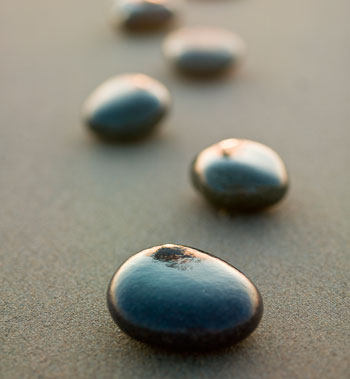 I’m a lucky acupuncturist.
I’m a lucky acupuncturist.
I work with wonderful people every day and I get to hear your stories, celebrate when you get well and watch your families grow up.
I always try to think of ways to improve your health but suddenly it occurred to me—there is one way I haven’t yet helped you.
I haven’t given you a definitive guide to staying healthy.
This pains me. Not only have I neglected giving you the secret to good health but also if I give it to you, you’ll leave me. You won’t need me anymore.
The more I thought about this, the more nervous I became. You see, there’s not one way to stay well, not two or three.
In fact, there must be 50 ways to leave your acupuncturist. (Read more…)
Mashed Parsnips
Mashed Parsnips
from East Meets West Weight Loss
Are you the “meat and potatoes” type? Maybe you live with one and it makes it difficult for you to cook the healthy foods you know you should be eating. Either way you should try this great mashed potatoes substitute. Parsnips will help you feel full, curb your sugar cravings, and give you a healthy alternative to a staple food.
Ingredients
2 pounds of parsnips, peeled, and cubed
1 Bartlett pear, peeled, cored, and cut in half
4 garlic cloves, peeled
2 ½ tsp extra virgin olive oil
2 tsp lemon juice
Salt and pepper to taste
Directions
1 – Fill a large pot with water and add parsnips, garlic, and pear. Make sure ingredients are covered by an inch of water. Bring the water to a boil and then turn down the heat until it is simmering. Let simmer for 20-25 minutes covered. Parsnips should be soft in the middle and easily pierced with a fork.
2 – Drain the pot and transfer the parsnips, garlic, and pear to a food processor*. Add the lemon juice, olive oil, salt, and pepper. Blend until mixture is smooth and creamy in consistency. Serve warm.
*Don’t own a food processor? You could put ingredients through a potato ricer or use a potato masher. Or whatever method you would normally use to make mashed potatoes.
Qigong
Qigong – some of you have heard me talk about qigong before. For those that haven’t you’re probably looking at it trying to decide how to pronounce it (it’s pronounced chee-gung, don’t let the q fool you). Whether you have a passing familiarity or are just learning a fantastic new Scrabble word I hope by the end of this post you are interested in trying qigong for yourself.
So what is qigong? Qigong is the name for a wide variety of health promoting practices from China that combine deep breathing, aligned posture, and mental focus/meditative techniques to promote health and well-being. It is based on the same principles as Traditional Chinese Medicine, and is itself a part of Chinese medicine (one of the 5 pillars along with acupuncture, herbal medicine, nutrition therapy, and tuina/massage). The main idea is that it develops and strengthens the energy, or qi/chi, of the body, circulates the qi through the meridians, and boosts and harmonizes the functioning of the internal organs. The movements used are gentle and are coupled with deep breathing, proper posture, and emptying of the mind. By clearing the mind it also has a meditative action. Therefore it’s effects are on both the physical and the mental/emotional aspects of the body. It is a form of exercise despite not looking much like the types of exercise we are used to. Though it may not cause us to break a sweat or get short of breath it can be just as beneficial to the body as any other form of exercise, and it doesn’t cause wear and tear on the joints and muscles. It can be a great starting point for those who aren’t getting much exercise currently, or a great addition to an existing exercise regime.
A daily qigong practice can have many beneficial effects on the body. The most obvious are stress relief, improved sleep, increased energy, and an overall sense of improved well-being. It can also be beneficial for many health conditions. These benefits can start to be felt within a few days of only around 15 minutes of daily practice. It also has some major benefits over the more well known practices of yoga and tai chi. In qigong most of the forms are done standing (sometimes sitting) and does not require any special equipment or clothing. They can be performed anywhere you have enough space to swing your arms around and not knock anything over. This gives it an advantage over yoga since you don’t need to bring a mat with you and where you might be limited where and when you can do it. The movements are easy to learn and done in repetitions. This gives it an advantage over tai chi that can take months to learn the specific sequence of movements/steps and which requires a lot more space to maneuver around in. There are also hundreds of different forms you can learn which can be mixed and matched to tailor to your needs and tastes. For example I like the forms that have a lot of movement over the ones that are predominantly still. I can even just do one form during a few minutes of down time when I need to relieve stress or perhaps a little mid-afternoon “pick-me-up”.
The many different movements of qigong all have different effects on the body, though there is a lot of overlap between them. Some focus on the arms and shoulders, some loosen and align the spine, while others get the legs pumping. The common thread between all of the different forms is deep breathing, proper posture, and mental focus. Breathing is something we all do daily yet few of us do it well. Obviously none of us are doing it “wrong” or else we’d pass out, but most of us don’t do it optimally. Many Americans breath shallow into their chests. In qigong we learn to take deep, slow breaths into our bellies. This allows much more oxygen into the blood stream while simultaneously slowing our breathing rate. More oxygen means more fuel for our bodies (oxygen is used to produce ATP which is the fuel burned by all of our bodies’ cells) which means more energy and improved mental function. A slow respiratory rate also causes us to slow our heart rate. A proper posture helps make deep breathing easier while also alleviating much of the physical stress we put on our joints and muscles. Mental focus makes qigong a meditative exercise. It allows us to slow down or stop the constant mental chatter that most of us have. This provides stress relief and mental clarity.
There are many ways to learn qigong. The best way is to learn from a teacher and I encourage any one who is interested to find a class nearby. Unfortunately, there are not many teachers in the area, and the cost and commitment of taking a class can make it difficult. There are also many books and websites about qigong. You can also find many different videos (free and not free) that show different exercises. If you have never done qigong before it is important to learn the basics before just following along with a free video on YouTube. If you are interested you can contact me for some more information to help get you started. Or even better CLICK HERE to go to a website that offers an online class. This is a 22 week program that shows you the basics as well as a complete set of qigong movements. While trying to weed through many different resources for my patients (and myself) I settled on this one because it is a complete product, and it offers a 2 week trial for only $4.95. That way you don’t have to shell out a lot of money only to find you don’t particularly like it. I hope you find it enjoyable and can share the many benefits that I have found by doing qigong.
If you’ve found the idea of an easy to do and easy to learn form of exercise intriguing I hope you seek out more information as there is much more to discuss about this topic (maybe I’ll have more posts in the future). But the best way to learn more about qigong is to actually try it. I suggest starting out with the 2 week trial mentioned above.

